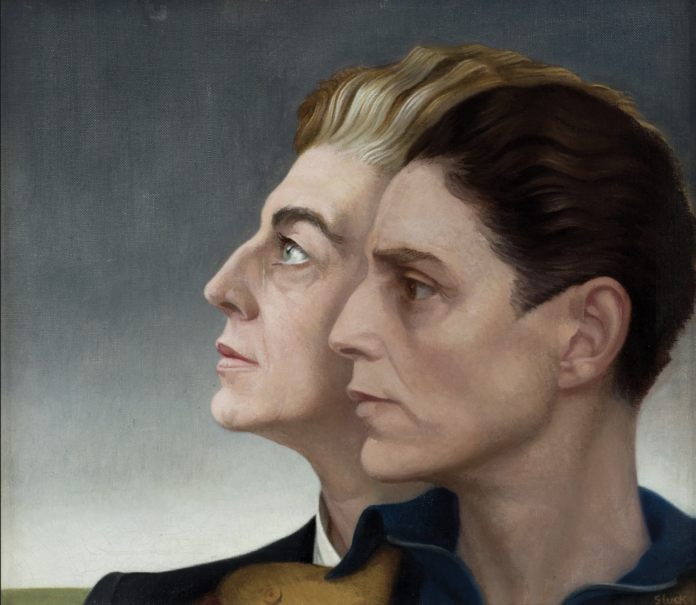Hannah Gluckstein
Hannah Gluckstein. 13 August 1895. London. Gluck was a British painter who rejected any forename or honorific, using the names Peter and Hig. Gluck joined the Lamorna artists’ colony near Penzance and was noted for portraits, floral paintings, and a new picture-frame design. Wikipedia
Died: January 10, 1978 (age 82 years), Steyning, United Kingdom
In early 20th-century British art, where tradition often held sway, Hannah Gluckstein, known simply as Gluck, blazed a trail of defiance and individuality. She rejected labels, conventions, and even her own given name, insisting on being recognized solely as “Gluck” – an androgynous declaration of self that mirrored her boundary-pushing art.
Gluck’s paintings, mainly her portraits, are striking in their directness and emotional intensity. Her subjects, often women with whom she shared intimate relationships, are depicted with an unflinching honesty that captures their vulnerability and strength. Gluck’s rejection of the idealized female form prevalent in much portraiture of the time was a quiet rebellion, a celebration of the complex reality of her subjects’ lives.
Her floral still lifes, inspired by the arrangements of her lover, florist Constance Spry, are equally captivating. Gluck’s flowers are not mere botanical specimens; they pulsate with life, their petals and stems seeming to dance across the canvas. Her innovative use of color and composition transformed the traditional genre into something fresh and modern.
Beyond her artistic achievements, Gluck’s life itself was a work of art. She lived openly as a lesbian in an era when such relationships were often shrouded in secrecy. Her self-portrait with Nesta Obermer, “Medallion,” is a testament to their love and a powerful symbol of queer identity.
Gluck’s art and life remain an inspiration, a reminder that true creativity often thrives in adversity. She challenged artistic and societal norms, paving the way for future artists to express themselves freely and authentically. Her legacy is a vibrant tapestry of defiance, passion, and unwavering commitment to her artistic vision.
Gluck’s Gender Paintings: Challenging Norms, Embracing Identity
Hannah Gluckstein, known simply as Gluck, was a trailblazer in artistic style and her fearless exploration of gender and sexuality through her paintings.
In an era when societal norms rigidly dictated gender roles and expressions, Gluck’s work served as a bold statement of self, a defiance of convention, and a celebration of queer identity.
Her portraits, especially those of her female lovers, stand out for their intimate and honest portrayals. Gluck refused to adhere to the idealized feminine forms often seen in traditional portraiture. Instead, she captured her subjects’ essence, complexities, and strength. Her work challenged the objectification of women, presenting them as individuals with depth and agency.
Perhaps the most iconic of her gender-themed paintings is “Medallion” (c. 1936), a double portrait featuring Gluck and her partner, Nesta Obermer. It was a radical statement of lesbian love at a time when such relationships were stigmatized and often hidden. The painting’s composition, with the two women gazing directly at the viewer, exudes confidence and challenges the viewer to acknowledge their relationship.
Gluck’s self-portraits also serve as powerful explorations of gender identity. In these works, she presents herself in a masculine style, wearing tailored suits and short hair. These self-portraits were not just representations of her physical appearance but a declaration of her rejection of traditional feminine roles.
Her refusal to use any prefix or honorific with her name, simply signing her work as “Gluck,” further emphasized her rejection of gendered expectations. She wanted to be recognized solely for her art, not for her gender or social standing.
Gluck’s paintings weren’t just a personal expression; they were a challenge to the societal norms of her time. They helped pave the way for greater visibility and acceptance of LGBTQ+ identities, and they remain a powerful testament to the courage and resilience of queer artists who dared to live and create authentically.




